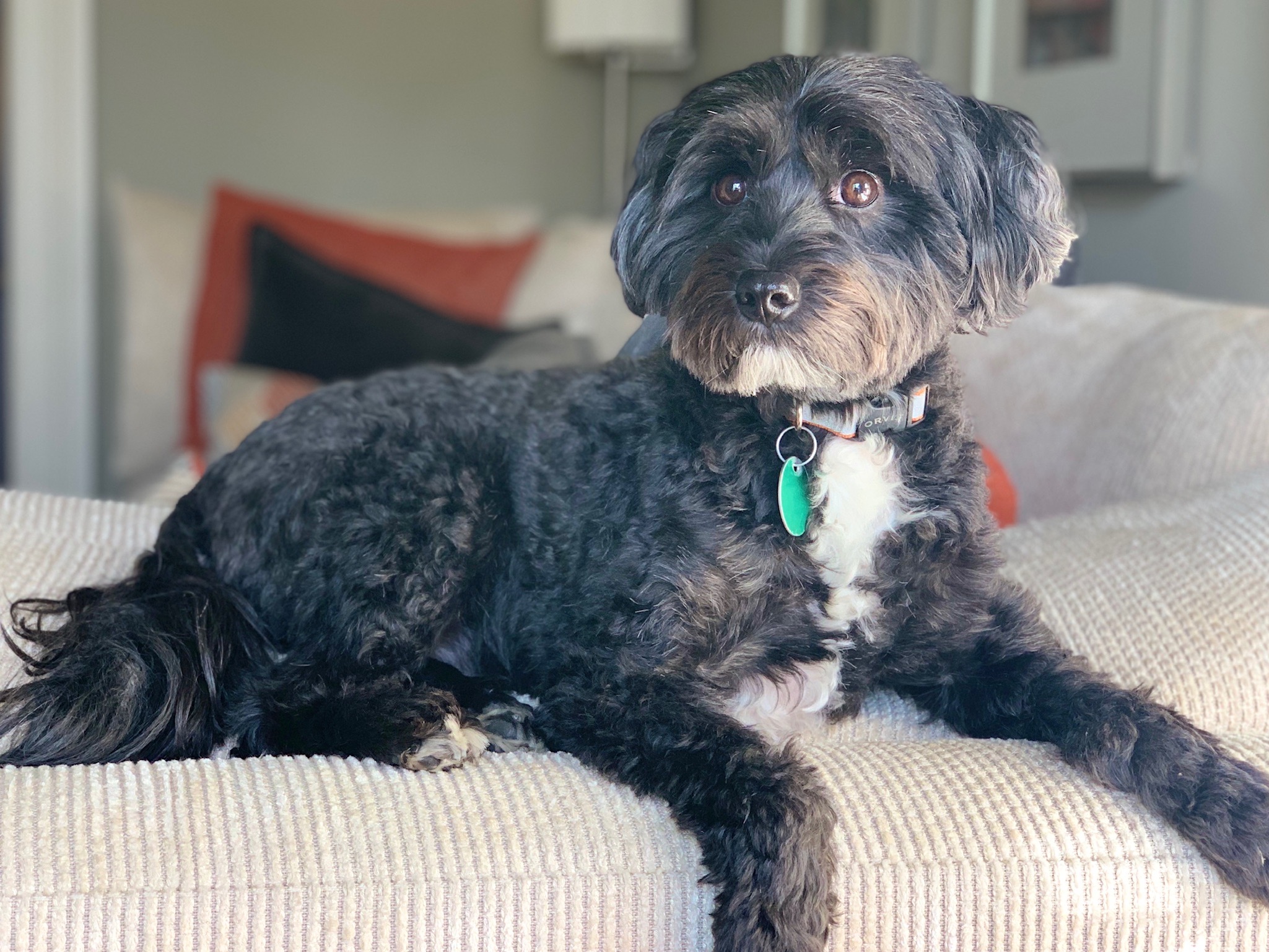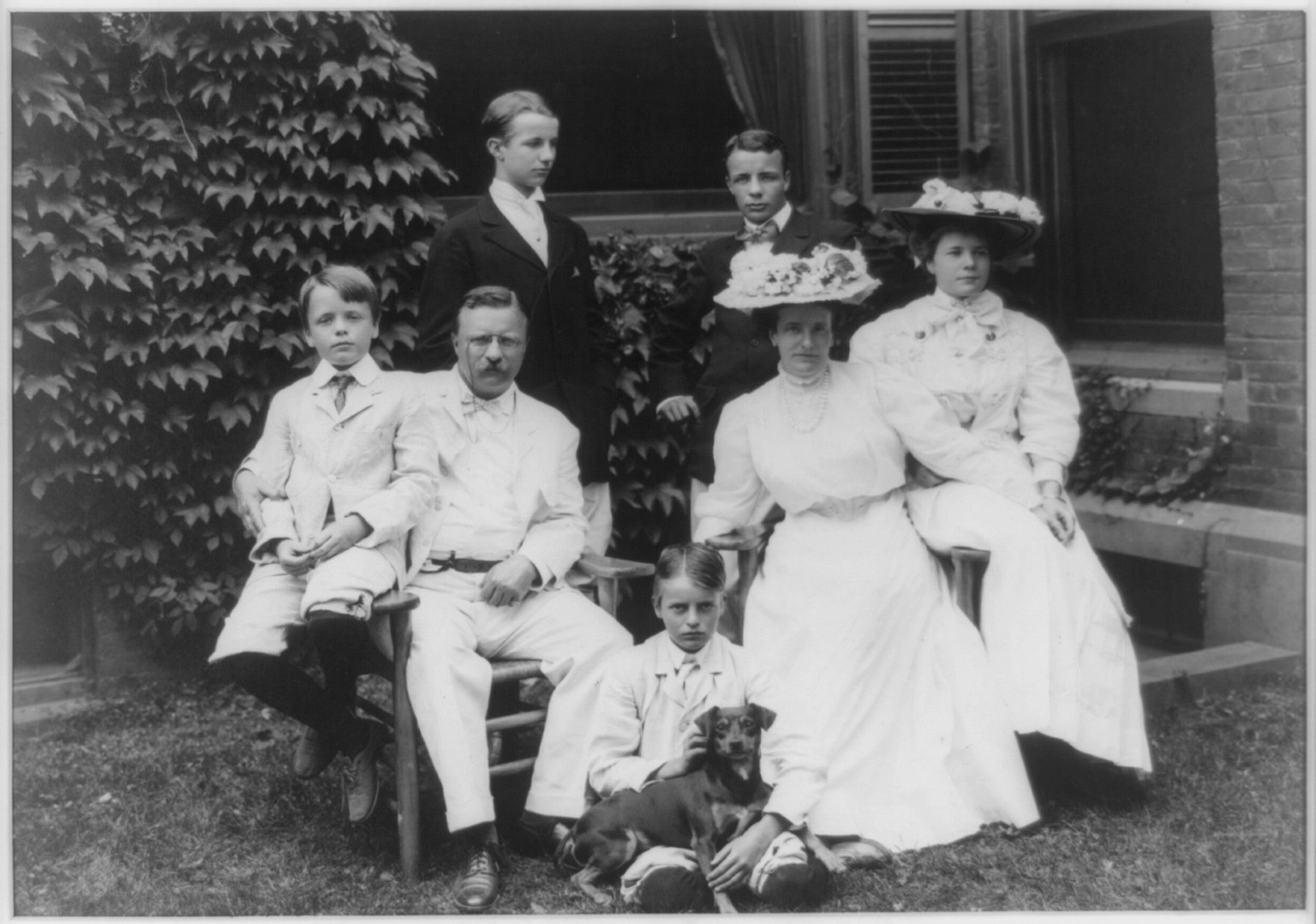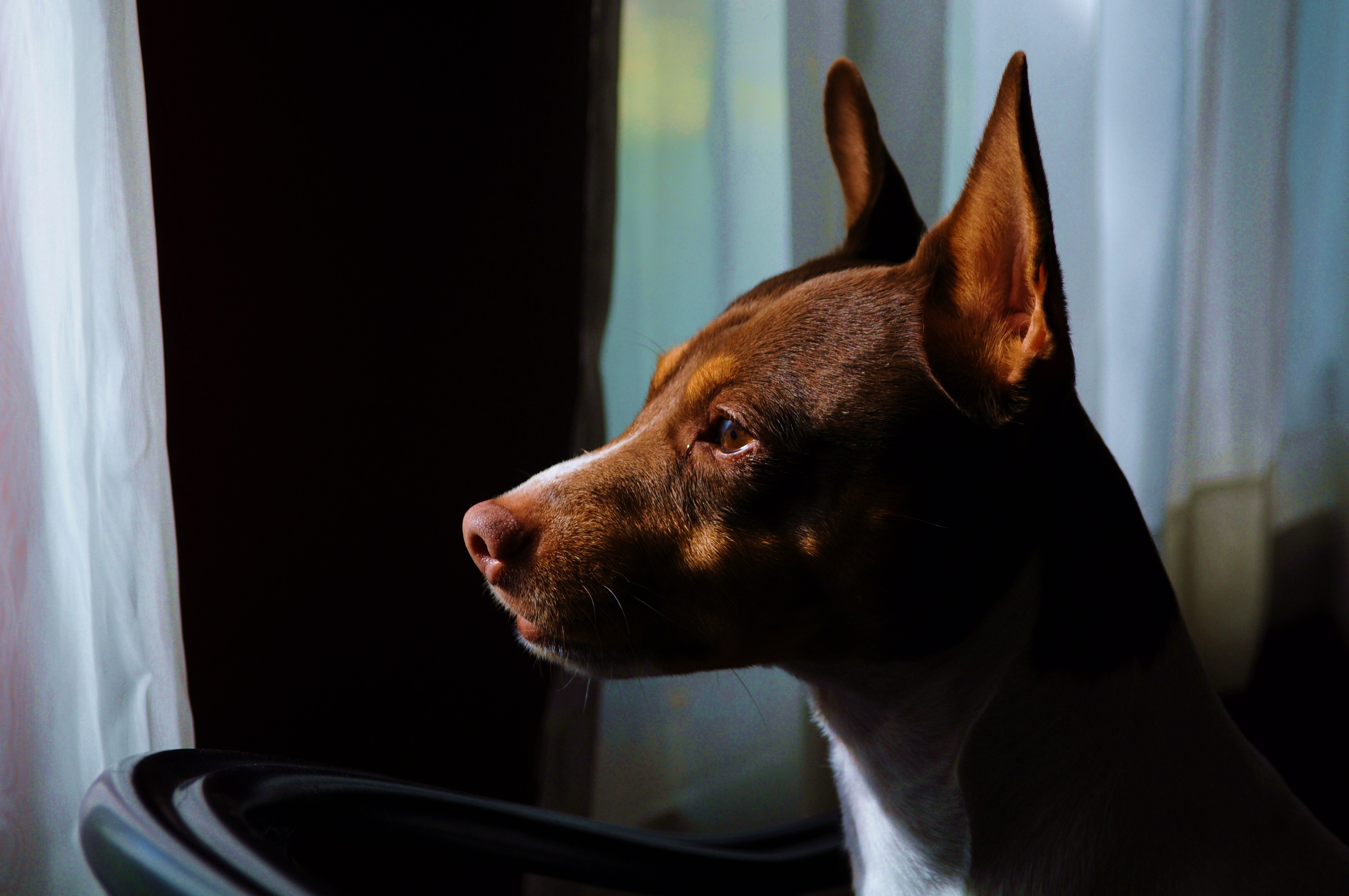|
Lens Subluxation
Ectopia lentis is a displacement or malposition of the eye's lens from its normal location. A partial dislocation of a lens is termed lens subluxation or subluxated lens; a complete dislocation of a lens is termed lens luxation or luxated lens. Ectopia lentis in dogs and cats Although observed in humans and cats, ectopia lentis is most commonly seen in dogs. Ciliary zonules normally hold the lens in place. Abnormal development of these zonules can lead to primary ectopia lentis, usually a bilateral condition. Luxation can also be a secondary condition, caused by trauma, cataract formation (decrease in lens diameter may stretch and break the zonules), or glaucoma (enlargement of the globe stretches the zonules). Steroid administration weakens the zonules and can lead to luxation, as well. Lens luxation in cats can occur secondary to anterior uveitis (inflammation of the inside of the eye). Anterior lens luxation With anterior lens luxation, the lens pushes into the iris or ac ... [...More Info...] [...Related Items...] OR: [Wikipedia] [Google] [Baidu] |
Marfan Syndrome
Marfan syndrome (MFS) is a multi-systemic genetic disorder that affects the connective tissue. Those with the condition tend to be tall and thin, with dolichostenomelia, long arms, legs, Arachnodactyly, fingers, and toes. They also typically have hypermobility (joints), exceptionally flexible joints and scoliosis, abnormally curved spines. The most serious complications involve the heart and aorta, with an increased risk of mitral valve prolapse and aortic aneurysm. The lungs, eyes, bones, and the dura mater, covering of the spinal cord are also commonly affected. The severity of the symptoms is variable. MFS is caused by a mutation in ''FBN1'', one of the genes that make fibrillin, which results in abnormal connective tissue. It is an autosomal dominant disorder. In about 75% of cases, it is inherited from a parent with the condition, while in about 25% it is a new mutation. Diagnosis is often based on the Ghent criteria, family history and genetic testing (DNA analysis). Th ... [...More Info...] [...Related Items...] OR: [Wikipedia] [Google] [Baidu] |
Iridodonesis
Iridodonesis () is the vibration or agitated motion of the iris with eye movement. This may be caused by lens subluxation, the incomplete or partial dislocation of the lens; or by aphakia Aphakia is the absence of the lens of the eye, due to surgical removal, such as in cataract surgery, a perforating wound or ulcer, or congenital anomaly. It causes a loss of ability to maintain focus ( accommodation), high degree of farsightedn ..., the absence of a lens. The term originated from irido- () + doneo (, to shake to and fro). See also * Phacodonesis References External links * Ophthalmology {{eye-stub ... [...More Info...] [...Related Items...] OR: [Wikipedia] [Google] [Baidu] |
Labrador Retriever
The Labrador Retriever or simply Labrador or Lab is a British list of dog breeds, breed of water dog retriever gun dog. It was developed in the United Kingdom from St. John's water dogs imported from the Newfoundland Colony, colony of Newfoundland (now a Newfoundland and Labrador, province of Canada), and was named after the Labrador region of that colony. It is among the most commonly kept dogs in several countries, particularly in the Western world. Labradors are often friendly, energetic, and playful. It was bred as a sporting and hunting dog but is widely kept as a companion dog. Though content as a companion, these dogs are intelligent and require both physical and mental stimulation. It may also be trained as a guide dog, guide or assistance dog, or for rescue dog, rescue or therapy dog, therapy work. In the 1830s, the Alexander Home, 10th Earl of Home, 10th Earl of Home and his nephews, the Walter Montagu Douglas Scott, 5th Duke of Buccleuch, 5th Duke of Buccleuch and ... [...More Info...] [...Related Items...] OR: [Wikipedia] [Google] [Baidu] |
Recessive Gene
In genetics, dominance is the phenomenon of one variant (allele) of a gene on a chromosome masking or overriding the effect of a different variant of the same gene on the other copy of the chromosome. The first variant is termed dominant and the second is called recessive. This state of having two different variants of the same gene on each chromosome is originally caused by a mutation in one of the genes, either new (''de novo'') or inherited. The terms autosomal dominant or autosomal recessive are used to describe gene variants on non-sex chromosomes ( autosomes) and their associated traits, while those on sex chromosomes (allosomes) are termed X-linked dominant, X-linked recessive or Y-linked; these have an inheritance and presentation pattern that depends on the sex of both the parent and the child (see Sex linkage). Since there is only one Y chromosome, Y-linked traits cannot be dominant or recessive. Additionally, there are other forms of dominance, such as incomplete ... [...More Info...] [...Related Items...] OR: [Wikipedia] [Google] [Baidu] |
Border Collie
The Border Collie is a British list of dog breeds, breed of herding dog of the collie type of medium size. It originates in the region of the Anglo-Scottish border, and descends from the traditional Sheep dog, sheepdogs once found all over the British Isles. It is kept mostly as a working sheep-herding dog or as a companion animal. It competes with success in sheepdog trials. It has been claimed that it is the canine intelligence, most intelligent breed of dog. History The Border Collie is descended from landrace collies, a type found widely in the British Isles. The name for the breed came from its probable place of origin along the Anglo-Scottish border. Mention of the "collie" or "Colley" type first appeared toward the end of the 19th century, although the word "collie" is older than this and has its origin in the Scots language. It is also thought that the word 'collie' comes from the old Celtic word for useful. Many Border Collies today can be traced back to a dog known as ... [...More Info...] [...Related Items...] OR: [Wikipedia] [Google] [Baidu] |
Shar Pei
The Shar Pei () is a dog breed from southern China. Traditionally kept as a property guardian, the shar pei was driven to the brink of extinction in the 20th century. The breed is known in the West for its deep wrinkles, while a traditional less wrinkled form is maintained in Hong Kong. History There are no records indicating the origins of the shar pei, although it closely resembles effigies of an un-wrinkled type of guard dog kept in southern China during the Han dynasty; some believe the modern breed, along with the chow chow, descends from these dogs. The breed has been identified as a basal breed that predates the emergence of the modern breeds in the 19th century. The shar pei was once very popular, but war and political turmoil in China in the 20th century took its toll on the breed and by the 1970s it was close to extinction. In 1973 a Hong Kong businessman named Matgo Law appealed to the international community, in particular the American Kennel Club, to help save t ... [...More Info...] [...Related Items...] OR: [Wikipedia] [Google] [Baidu] |
Bull Terrier (Miniature)
The English Miniature Bull Terrier is a breed with origins in the extinct English White Terrier, the Dalmatian and the Bulldog. The first existence is documented in 1872 in ''The Dogs of British Island''. Description Appearance Miniature Bull Terriers have short, fine, and glossy coats that are very close to the skin, like Bull Terriers. They are accepted in the ring to be white, white with another colour, or fully coloured. However, like the Bull Terriers, any blue or liver-coloured coats are undesirable. These dogs require minimal grooming. In the early 1900s, the difference between the breeds was determined by the dog's weight. However, this led to Miniature Bull Terriers becoming so small and fine that they looked more like a Chihuahua than a Bull Terrier. So, in the 1970s, the weight limit was replaced with a height limit of under fourteen inches. They are usually no smaller than ten inches. According to the AKC, miniature bull terriers' weight must be proportionate t ... [...More Info...] [...Related Items...] OR: [Wikipedia] [Google] [Baidu] |
Tibetan Terrier
The Tibetan Terrier is a medium-sized dog breed, breed of dog that originated in Tibet. Despite its name, it is not a member of the terrier group. The breed was given its English name by European travelers due to its resemblance to known terrier breeds. The Standard Tibetan, Tibetan name for the breed, Tsang Apso, roughly translates to "shaggy or bearded ("apso") dog, from the province of Ü-Tsang, Tsang". Some old travelers' accounts refer to the dog as Dokhi Apso or "outdoor" Apso, indicating a shaggy or bearded working dog which lives outdoors. History Tibetan Terriers have been bred and raised in monasteries of Tibet for 2,000 years. Historically, Tibetan Terriers were kept as good luck charms, mascots, Guard dog, watchdogs, herding dogs, and companions. They were also used to retrieve articles that fell down mountainsides. Dr. Agnes Greig of England brought the first Tibetan Terrier to Europe in 1922. She was given a gold and white female puppy named "Bunti" after success ... [...More Info...] [...Related Items...] OR: [Wikipedia] [Google] [Baidu] |
Teddy Roosevelt Terrier
The Teddy Roosevelt Terrier is a small to medium-sized American hunting terrier. It is lower-set, with shorter legs, and is more muscular with heavier bone density than the related American Rat Terrier. Much diversity exists in the history of the Teddy Roosevelt Terrier breed, and it shares a common early history with the American Rat Terrier, Fox Paulistinha, and Tenterfield Terrier. The Rat Terrier's background is said to stem from the terriers or other dogs that were brought over by early English and other working-class immigrants. Since the breed was a farm, hunting, and utility dog, little to no planned breeding was used other than breeding dogs with agreeable traits to each other to produce the desired work ethic in the dog. The Feist (dog), Bull Terrier, Smooth Fox Terrier, Manchester Terrier, Whippet, Italian Greyhound, the now extinct English White Terrier, Turnspit Dog, and Wry-legged Terrier all share in the Teddy Roosevelt Terrier's ancestry. These early r ... [...More Info...] [...Related Items...] OR: [Wikipedia] [Google] [Baidu] |
Rat Terrier
The Rat Terrier is an American dog breed with a background as a farm dog and hunting companion. They share much ancestry with the small hunting dogs known as feists. Common throughout family farms in the 1920s and 1930s, they are now recognized by the United (UKC) and American Kennel Clubs (AKC) and are considered a rare breed. Rat Terriers are an intelligent and active breed that can be kept both for pest control and as a family pet. Description Appearance The Rat Terrier ranges from about and stands at the shoulder. The miniature size— and under as defined by the UKC—has become more popular as a house pet and companion dog, but the miniature is still a hunting dog. The standard says "small to medium" and the miniature is small enough to go in and under those places where vermin like to hide. A larger strain, often in excess of , has been developed. Called the Decker or Decker Giant, it was named after breeder Milton Decker who created a larger hunting companion and ... [...More Info...] [...Related Items...] OR: [Wikipedia] [Google] [Baidu] |
Fox Terrier (Wire)
The Wire Fox Terrier (also known as Wire Hair Fox Terrier, Wirehaired Terrier or simply Fox Terrier) is a breed of dog, one of many terrier breeds. It is a fox terrier, and although it bears a resemblance to the Smooth Fox Terrier, they are believed to have been developed separately. It originates from England. Appearance The Wire Fox Terrier is a sturdy, balanced dog weighing for males and for females. It should not be more than at the withers. Its rough, broken coat is distinctive. Coat colour consists of a predominant white base with brown markings of the face and ears, and usually a black saddle or large splotch of colour; there may be other black or brown markings on the body. Temperament Two of the Wire Fox Terrier's most distinctive traits are its energy and intelligence. It has a low threshold for boredom and requires stimulation, exercise and attention. The Wire Fox Terrier is a companion animal that requires near-constant attention. The dog should be alert, q ... [...More Info...] [...Related Items...] OR: [Wikipedia] [Google] [Baidu] |







